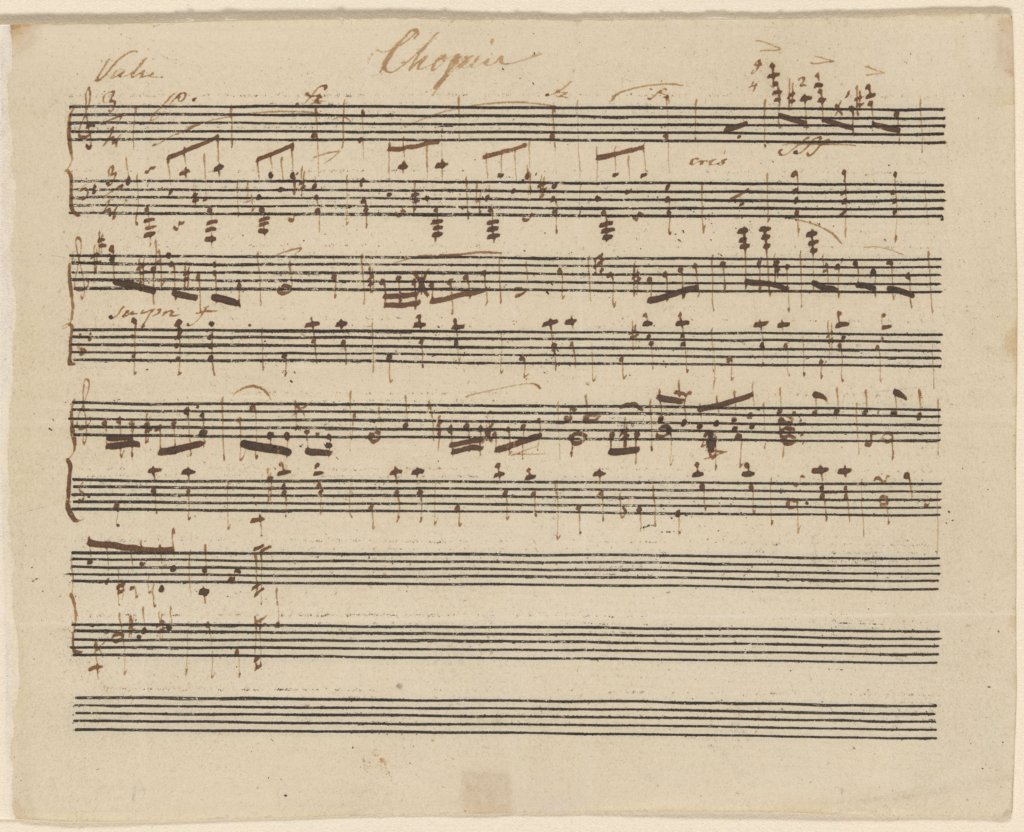A piece of music from the Leipzig City Library has been identified as an unknown work by Wolfgang Amadeus Mozart from his youth. The manuscript of the Serenade in C major was discovered in the library’s Karl Ferdinand Becker collection by researchers from the International Mozarteum Foundation in Salzburg while compiling a new edition of the Kocher Catalogue, a comprehensive cross-referenced catalogue of Mozart’s works published since 1862.
 This manuscript is not in Mozart’s own handwriting. It is a copy written in dark brown ink on white handmade paper around 1780. It was later bound in a hardcover. The manuscript is not signed, but the copyist attributes it to the hand of “Wolfgang Mozart.” The absence of a middle name means that Mozart composed the piece before 1769 (he began adding “Amadeo” to his manuscripts after his first visit to Italy in 1769). The style of the piece is also typical of his work from the 1760s. Mozart was born in 1756, so he would have been no older than 13 when he composed the Serenade in C major.
This manuscript is not in Mozart’s own handwriting. It is a copy written in dark brown ink on white handmade paper around 1780. It was later bound in a hardcover. The manuscript is not signed, but the copyist attributes it to the hand of “Wolfgang Mozart.” The absence of a middle name means that Mozart composed the piece before 1769 (he began adding “Amadeo” to his manuscripts after his first visit to Italy in 1769). The style of the piece is also typical of his work from the 1760s. Mozart was born in 1756, so he would have been no older than 13 when he composed the Serenade in C major.
 The work is a trio in C major for two violins and a double bass. The work is only 12 minutes long and consists of seven small movements for string trio.
The work is a trio in C major for two violins and a double bass. The work is only 12 minutes long and consists of seven small movements for string trio.
For Ulrich Leisinger, head of research at the International Mozarteum Foundation and editor of the latest edition of Köchel, the trio is an important piece in Mozart’s musical output: “Until now, we have known the young Mozart mainly as a composer of keyboard music, arias and symphonies, but we know from a list drawn up by Leopold Mozart that he wrote many other chamber works in his youth, which have unfortunately been lost. Thanks to a series of favorable circumstances, the string trio seems to have survived intact in Leipzig. It is obvious that the work was written by Mozart’s sister, so it is easy to assume that she preserved it in memory of her brother. Perhaps Mozart wrote the trio specifically for her and her name day.”
The newly discovered work made its debut at the Leipzig Opera on Saturday.


 Anal Beads
Anal Beads Anal Vibrators
Anal Vibrators Butt Plugs
Butt Plugs Prostate Massagers
Prostate Massagers
 Alien Dildos
Alien Dildos Realistic Dildos
Realistic Dildos
 Kegel Exercisers & Balls
Kegel Exercisers & Balls Classic Vibrating Eggs
Classic Vibrating Eggs Remote Vibrating Eggs
Remote Vibrating Eggs Vibrating Bullets
Vibrating Bullets
 Bullet Vibrators
Bullet Vibrators Classic Vibrators
Classic Vibrators Clitoral Vibrators
Clitoral Vibrators G-Spot Vibrators
G-Spot Vibrators Massage Wand Vibrators
Massage Wand Vibrators Rabbit Vibrators
Rabbit Vibrators Remote Vibrators
Remote Vibrators
 Pocket Stroker & Pussy Masturbators
Pocket Stroker & Pussy Masturbators Vibrating Masturbators
Vibrating Masturbators
 Cock Rings
Cock Rings Penis Pumps
Penis Pumps
 Wearable Vibrators
Wearable Vibrators Blindfolds, Masks & Gags
Blindfolds, Masks & Gags Bondage Kits
Bondage Kits Bondage Wear & Fetish Clothing
Bondage Wear & Fetish Clothing Restraints & Handcuffs
Restraints & Handcuffs Sex Swings
Sex Swings Ticklers, Paddles & Whips
Ticklers, Paddles & Whips


















